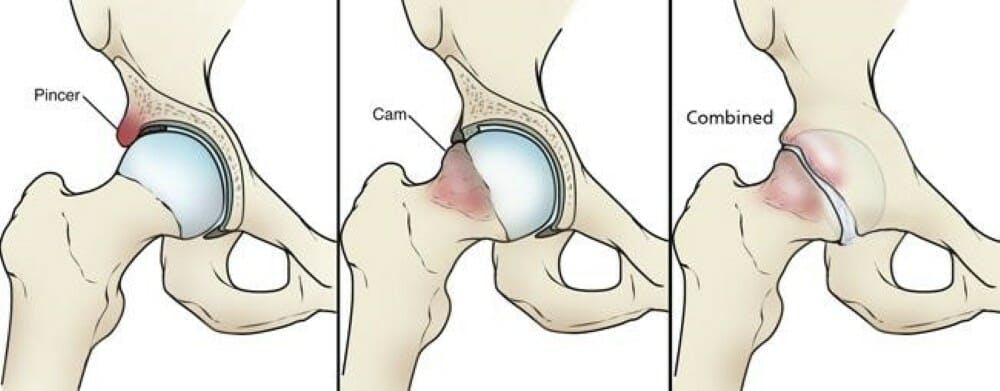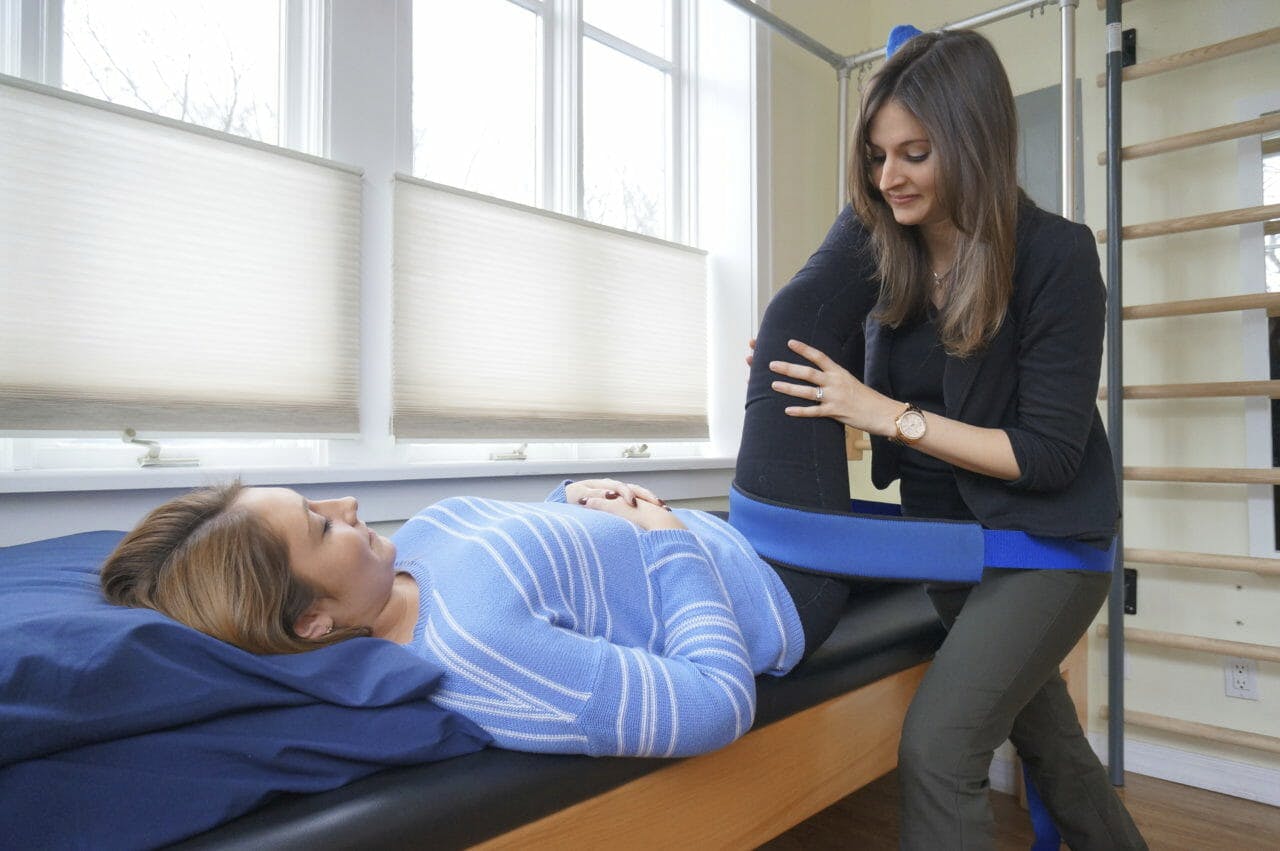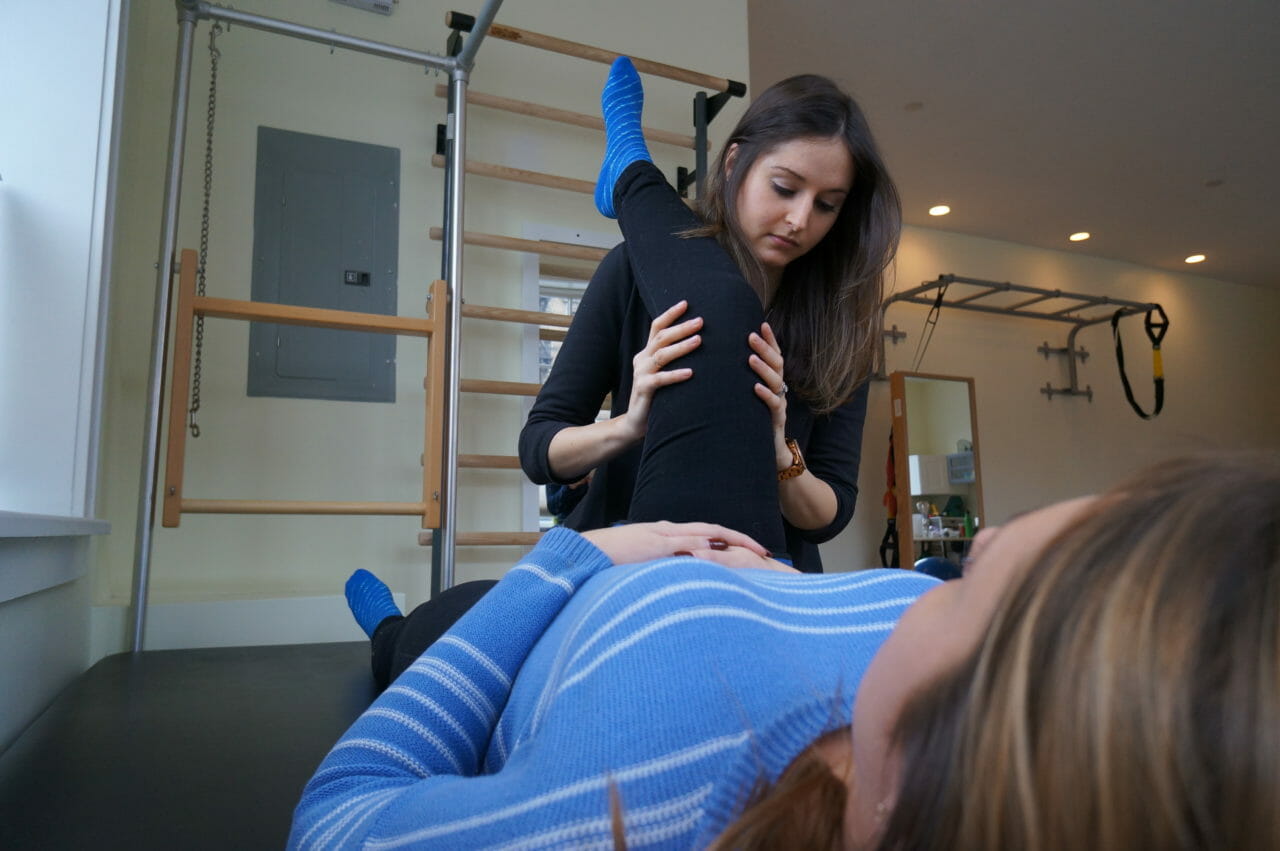Written by Boris Gilzon, PT, DPT, OCS, CHT & Alex Ariza
Physical Therapists play an essential role in the nonsurgical treatment of hip pain. Two of the most common conditions associated with hip pain are labral tears and hip impingement.
Labral Tears
Labral tears occur when the labrum, which is the cartilage that comes between the head of the femur – your thigh bone – and your pelvis – your hip bone, begins to wear down or experiences trauma. The most common cause of labral tears is repetitive stress on the hip joint, especially for athletes participating in running and skating sports.

https://www.moveforwardpt.com/symptomsconditionsdetail.aspx?cid=fabdfb4e-5fb5-4077-b341-df5d04a93605
Hip Impingement
Hip impingement, also known as femoroacetabular impingement (FAI), occurs when extra bone grows on either or both the head of the femur or the acetabulum (the part of the pelvis where the femur meets – the “socket”). The extra bone creates an irregular fit and can start to rub against the cartilage or bones in a way that can damage the joint causing hip pain.
There are 2 types of hip impingement. They can occur separately or together.

https://orthoinfo.aaos.org/en/diseases–conditions/femoroacetabular-impingement/
Cam-type Impingement
The head of the femur is shaped like a sphere. It acts as the “ball” for “ball and socket” joint in your the hips. In this deformity, an excessive bone growth around the head of the femur creates an irregular shape that makes it difficult to rotate in the acetabulum, your “socket”.
The misshapen overgrowth contacts the cartilage that lines the hip socket, the labrum, and can cause it to become worn and frayed. This can lead to hip instability and pain.
Pincer-type Impingement
Pincer impingement is when the acetabulum (hip socket) protrudes around the femur head, decreasing the space of the joint. Overtime with repetitive contact, hip flexion (bending over, sitting, walking) leads to tearing and inflammation of the cartilage that envelopes and protects the joint (labrum).
Symptoms
With either one of these conditions you may experience:
- Increased pain with prolonged sitting and leaning forward in the sitting position.
- Sharp pain during squatting, changing direction during running, pivoting and lateral motions./li>
- Stiffness and deep aching in the front of the hip. Occasional groin pain.
- Decrease ability to turn your thigh inward.
Treating Hip Pain with Physical Therapy

Treatment of hip pain starts with a comprehensive evaluation of movement of your hip and surrounding joints.
Our therapists will test the strength of the muscles around your hip and observe your movements to properly diagnose the condition. During each session, our therapists will instruct and educate you about your body mechanics, the origin of your injury, and exercises you can perform to prevent future injury to the hip and strengthen the muscles around the hip and other parts of your body to stabilize and correct any imbalances.
Your orthopedic doctor may order X-rays and an MRI to confirm the diagnosis.
Hip impingement and labral tears may be concurrent with lower back pain and pelvic floor dysfunction.
Once your weaknesses and imbalances are identified, the goal of therapy is to restore normal force coupling and to develop strategies to compensate if your condition is chronic.
Strengthening of weak muscles and stretching tight muscles can help to avoid the progression of hip impingement. Manual therapy techniques may also be employed restore flexibility of the joint.
At Park Sports Physical Therapy, one of our therapists, Svetlana Lazarev, PT, is an advance hip clinician certified by the Hospital for Special Surgery (HSS).
Hip Arthroscopy Post Operative Rehabilitation
If you do end up having surgery for your hip pain, our therapists follow an established post-surgical protocol. Physical therapy is known to shorten recovery time and ensures that your body is healing properly. Our therapists help to promote safe healing by limiting the weight you put on the operated leg, exercises, stretching, and manual therapy.
The next stage of postoperative rehabilitation focuses on improving your range of motion and strength. During your treatment, our physical therapists can keep your doctor and orthopedic surgeon informed of your progress if you choose.
After 4 to 6 months of treatment following surgery, you’ll be able to return to your normal activities.
Do you currently suffer from hip pain? We can help.
Fill out my online form.
.png?auto=format&auto=compress&h=150)
